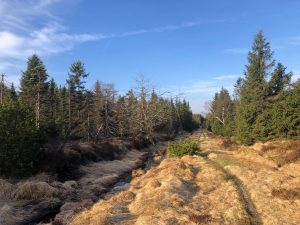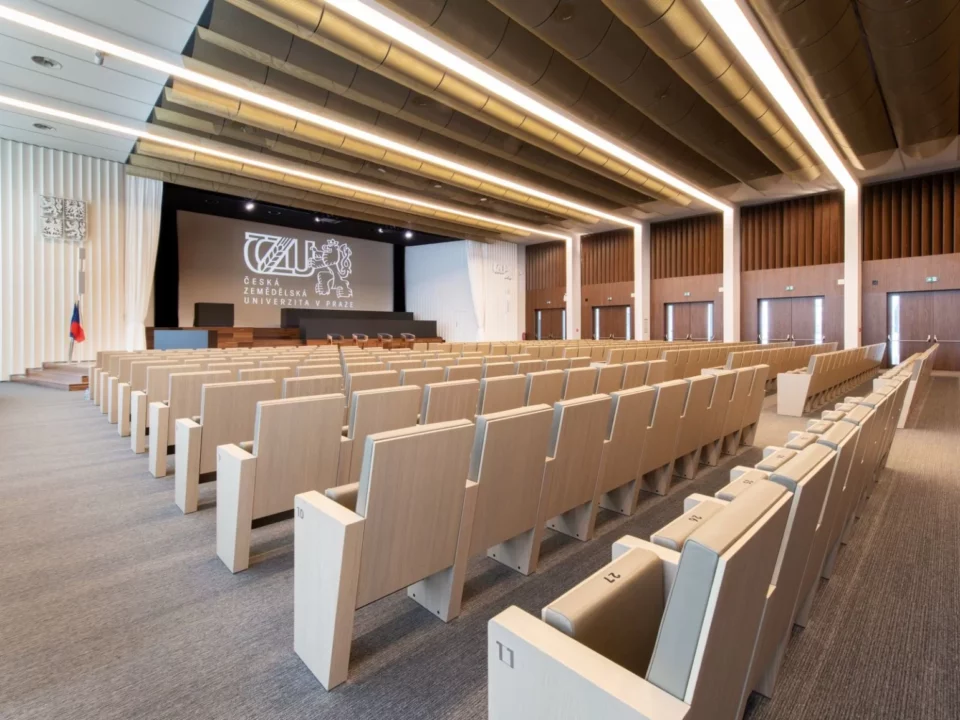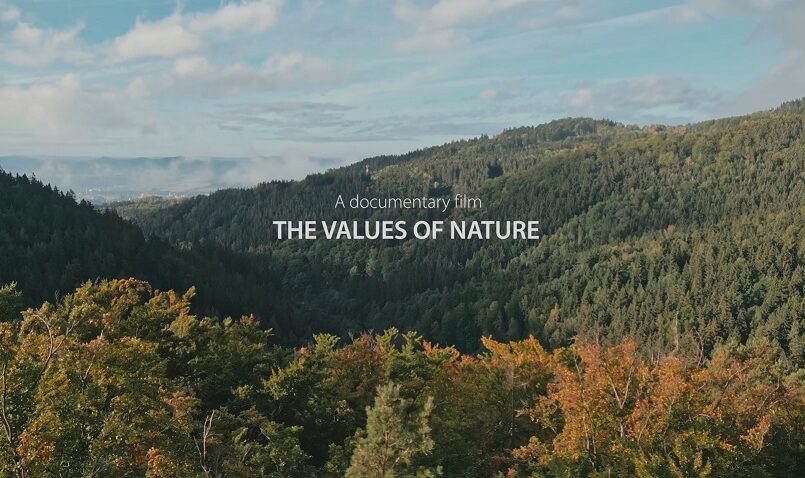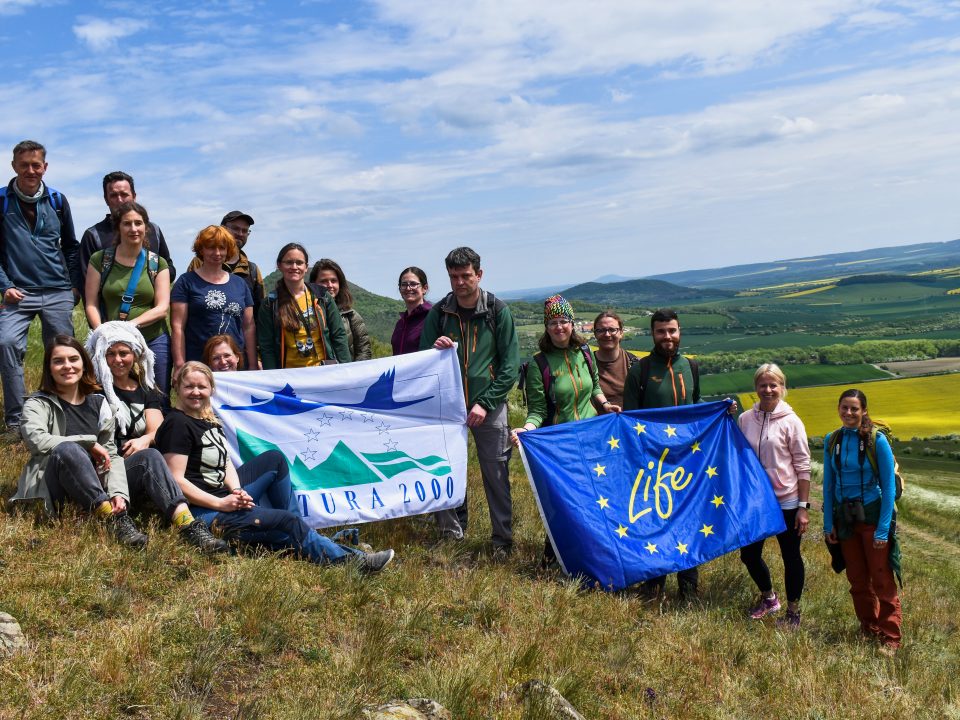Natura 2000 helps to save many sites
On the occasion of the 30th anniversary of Natura 2000, we asked Ms. Eva Volfová, an expert in nature conservation and currently Deputy Minister of the Environment, to answer questions about the history and future of this unique network of areas protected at the EU level.

Bohemian Forest, Vlčí jámy
What does Natura 2000 mean to you?
Natura 2000 is very important to me personally. I have been engaged in it since 2003, when I started with habitat mapping and gradually got involved in other activities such as protected site designation, preparation of management plans, impact assessment or the actual management. I remember the first time I was mapping in the floodplain of the Třemošná River and, according to the relief there, struggled with the transitions between alluvial Alopecurus meadow and mesic Arrhenatherum meadow. In 2005, we prepared a shadow list of about 500 sites for the biogeographical seminar with Ametyst (NGO), the Czech Botanical Society and the Coalition for Natura. That same year, within Natura evaluation testing, I thought about how to write it up in the best way, and later we based a methodology on that. One of the first assessments I did was that of a wind farm in the Ore Mountains and met the best black grouse specialist. Together, we then mowed Euphydryas meadows, cut down trees, made composts for freshwater pearl mussel or partitions for peat bogs. We have also worked up hundreds of assessments.
I find the concept that Natura came up with professionally brilliant, timeless and comprehensive. The Birds Directive focused attention on this important group already in 1979. Habitat protection was then anchored by the Habitats Directive, as early as in 1992.
Natura 2000 is a well-designed instrument that we have managed to develop and use in the Czech Republic. It helps us to direct well and then evaluate the management of habitats and species. Sites have a clearly defined target feature, monitoring is carried out and the status is assessed in a six-year cycle at national level, and sites are protected from the negative effects of plans and projects.
How do Natura 2000 protected areas differ from traditional Czech specially protected areas?
Natura protects selected phenomena that are endangered in the whole of the EU, so there is a clear difference in targeting. I think Natura has a bit more respect and is also more systematic in defining what it protects and in monitoring and evaluating the management.
For large-scale conservancy, Natura 2000 is a support for national parks and protected landscape areas, often helping to improve the management of specially protected species or dealing with the thorough impact assessment of projects. This includes, for example, the construction of residential houses, holiday facilities, ski resorts, golf courses, but also the development of road and railway infrastructure, etc.
In many places, large-scale specially protected areas are missing, and Natura is partially replacing them – this applies, for example, to the Chřiby Hills, Bzenecká doubrava, Ždánický les and the Ore Mts. and Novohradské Mts. Unlike protected areas, however, Natura sites do not have their own nature protection authority; instead of the PLA administration, they usually fall under regional authorities. Military districts, which belong to the military administration, are specific. Natura protects Doupov, Boletice and Libavá.
In small-scale protected areas, there is also a better delimitation and monitoring of management as well as a stricter approach to impact assessment thanks to Natura. Biological assessment, i.e., assessment of the effects of major interventions on the interests protected under Section 67 of the Act, applies to “non-Natura” protected phenomena (specially protected areas, specially protected species, significant landscape features, territorial system of ecological stability), but there is no methodology to this day. It could be inspired by the principles and specific procedures within assessment of Natura sites.
The Natura 2000 concept can inspire and help develop the general nature protection, complement the management of habitats and species outside of Natura sites and specially protected areas, and take overall care of phenomena not included on the European list as well.

Ore Mts., “U jezera” peat bog
What would Czech nature conservancy actually look like if the Birds Directive and the Habitats Directive, as the basic documents of the Natura 2000 network, had not been implemented in the Czech Republic?
It would be without a significant injection of attention and a large portion of data. Habitat mapping is a unique project, thanks to which we have obtained data on the area occurrence of habitats in the Czech Republic. At the beginning, it helped mainly with delimitation of the sites, and later also with further development of understanding our nature. For example, the Biotope Catalogue was created for habitats in 2001 and updated in 2010. And then in 2020, the Red List of Biotopes was published, which evaluates the threats to biotopes. Data on species are also collected – primarily mapping their occurrence and then monitoring them. Some species were partly out of attention before Natura, so we have only just learned about their occurrence (e.g., yellow-bellied toad and European fire-bellied toad, Northern crested newt, hermit beetle, marsh fritillary and others).
Natura has boosted the self-confidence of Czech nature conservancy and given our previous efforts a better direction and a European dimension. From the very beginning, great importance was attached to Natura-based assessment. In 2004, the Ministry of the Environment established a system of Natura authorisations, which is unique in Europe. Even when developing the methodologies and especially the handbook on impact assessment, we looked around Europe, collected examples of good practice and co-organised international workshops. To this day, we rely on a functioning system of Natura assessment that we would not have without the Directives.
The Natura 2000 network celebrates its 30th anniversary this year. What do you consider to be its greatest contribution at the European and Czech level? What has it brought us?
Natura 2000 is the largest network of specially protected areas in the world. This is impressive in itself. It is not easy to apply the same principles to the territories of the EU Member States, but it helps to protect target features on the whole continent. That is why we also protect some species and biotopes that are still relatively common in our country but are almost absent elsewhere in Europe.
In addition to the above-mentioned positives, especially the improvement in the state of knowledge, Natura has clearly helped to save many sites that would have been destroyed by development. Natura was, for example, a strong argument against the Danube-Oder-Elbe Canal or dams. In the Krkonoše Mountains, it has prevented the development of a number of valuable meadows. In the Bohemian Forest, development on the most precious botanical site, Zhůří, was prevented recently. In the black grouse habitat in Bohemian Forest, interventions against bark beetle and some tourist projects have been reduced significantly. Natura has helped to exclude the installation of renewable energy sources from black grouse´s mating-call sites, streams with European bullhead or the last fragments of sandbanks.
Sometimes a possible compromise can be found, and a project can be placed in a Natura site if mitigation or compensation measures are taken. For example, in the Bzenecká dobrava SPA, the planned main road is adapted to the protection of the nightjar by covering the road body in a tube. The only example of compensatory measures is implemented in the case of Břeclav ringroad.
Natura often has a preventive effect, not only through the assessment of land-use plans and other concepts. This applies to the vast majority of sites. Their boundaries can be seen on maps, and thanks to awareness-raising, investors are discouraged from negative impacts.
Natura has also helped us to see the needs of individual habitats and species, and to find and propose appropriate management methods or, conversely, ways of reducing the interventions, and, subsequently, we were also able to identify conflicts, for example between no-interference and management, and to look for solutions in individualised management of the area. Many sites are receiving appropriate management thanks to Natura, LIFE projects, OP – Environment or Landscape Management Programme. The LIFE programme has been used to revitalise peat bogs on a large scale in Bohemian Forest as well as gradually at many other sites in the Krkonoše Mts., Ore Mts. and Slavkov Forest. Sheep graze on meadows in Central Bohemian Highlands. Large herbivores such as Exmoor ponies, Heck cattle and European bison have moved into some military areas and training grounds, helping with the maintenance of forest-free habitats. They can be found in Milovice, Havranice Heath, Dobřany and other places.
On the other hand, forest habitats with a natural species composition or, for example, core areas of black grouse or lynx need as little intervention as possible.

Bohemian Forest, Kvilda
Which natural phenomena would be neglected in the Czech Republic without European protection?
In general, it is the awareness of the importance of forest-free areas for biodiversity and management needs that has increased substantially with Natura. Natura has drawn attention to valuable forest-free areas that were previously often lacking protection. For example, the phenomenon has been highlighted of community grazing areas, i.e., poor pastures, previously managed by grazing sheep and goats, where wet and dry areas alternate. Thanks to Natura, this management is being built on. The Plánice pasture or other sites in Bohemian Forest or in the Pilsen region are concerned for instance. Various types of small forest-free areas such as sandbanks, dry grasslands, but also alluvial meadows can be found e.g., in the Elbe catchment area. In the mountains, Natura has pointed out montane Trisetum meadows and Nardus grasslands. They are often found near settlements where they have had continuous management but are often threatened by development. Previously, they were protected only because of the presence of endangered species, now they have general protection on the basis of the habitat.
Protection of birds and other species also covers former military training sites. There are many phenomena that need disturbance management for their survival. Experimentation and gradual introduction over larger areas has been successful. In addition to the above-mentioned grazing of large herbivores, this concerns fires, military vehicles, which can be replaced by motocross or car races. I don’t think the pre-Natura conservationists could have imagined that.
The forest species of butterflies and beetles have in turn pointed to the need for a return to traditional forms of management such as the central forest. Specific management is also needed for alleys with hermit beetle.
Natura highlighted the importance of “common” forests of central elevation such as oak-hornbeam forests and beech forest. Here the wilderness concept can be applied to a greater extent and the area can be left without any interference.
If we compare the conditions and the state of Natura 2000 in the Czech Republic with other European countries, what do we excel in and what are our shortcomings?
We clearly excel in the data base, in the accuracy of the delineation of sites and target features.
The precise delineation can sometimes be a barrier, as some species live in metapopulations and sometimes “move out” of the site. So, it would be helpful to include not just core populations but also the wider area. Then for watercourses, the site delineation includes the watercourse only and the absence of a catchment area directly is obvious.
There is a lack of management at many sites due to lack of staff and financial capacity. Whilst there are examples of good practice in the introduction of grazing, disturbance management or the deployment of large herbivores, the key is to extend these practices to many, many more sites.
Unfortunately, we have already lost the target features in several sites – this applies to amphibian and butterfly sites, for example. In addition to the absence of management, this may have been due to adverse trends in metapopulations or just small-scale management of only a part of the biotope. Sometimes restoration management works, but it is laborious to set up a long-term maintenance management model.
We certainly excel at setting up the Natura evaluation system as well. Sometimes, however, there is insufficient assessment of cumulative effects or superstructural effects such as climate change have an impact. The evaluation of forest management plans (FMPs) is rather inadequate. The management of forest Natura sites should primarily be guided by the management plan. The LHPs do not ensure adequate protection of the sites and often fail to exclude significant impacts on target features. There is still no methodology for their assessment.

From the Strasbourg Ministerial Conference on 30 years of Natura 2000 (March 2022)
What challenges do the Czech Republic and the EU countries face in the coming years in meeting the Natura 2000 objectives? For example, also with regard to the EU Biodiversity Strategy by the year 2030?
Thanks to the area mapping of the Czech Republic, we now have a better idea of the space where nature remains. Previously, there may have been a general feeling that there was still ‘quite a lot’ of nature, that there were still other preserved places ‘out there’. Today we know that there are not many. We know where fragments of nature still occur – even outside Natura and specially protected areas. We also know that, despite the creation of Natura 2000, biodiversity continues to decline. Above all, we need to introduce and improve site management, to extend a number of sites, and to ensure that habitats and species are managed outside Natura 2000 sites as well. Restoration of habitats outside Natura is also a key challenge.
We should meet the objectives of the European Biodiversity Strategy. A European regulation, the Restoration Law, is expected to be approved this year and will significantly increase the pressure for habitat restoration, as well as for changes in conventional landscape management towards sustainability.
What would you wish Natura 2000 on its 30th anniversary?
In its 30 years, Natura 2000 has managed to significantly improve nature conservancy in Europe. I wish it to continue to grow and to be respected as our most precious natural asset. I also hope that, in addition to biologists, it reaches out to and attracts people from other professions who can help us to better ensure protection, buy up land, cut, burn, mow, or perhaps help with publicity and communication.
I wish Natura protection against destruction, enough appropriate management and enough space for spontaneous development. And lots of flowering plants and singing birds.
Thank you for the interview.
Also, thank you very much for your inspiring questions.
Thank you to the readers who have read this far. Thank you if you have given Natura some thought. I would be grateful for comments and questions.
And thank you to everyone who has worked on Natura over the past 30 years and contributed to its current image!
 Eva Volfová‘s professional life has been linked to Natura 2000 from the very beginning. She has been actively involved in the preparation and declaration of the network in the Czech Republic, including habitat mapping, preparation of expert proposals for individual sites and preparation and defence of the shadow list at biogeographical seminars. She was also involved in the preparation of management plans, assessment of the impact of plans and concepts on the Natura 2000 network (also at the methodological level) and biological assessments. She is involved in site management.
Eva Volfová‘s professional life has been linked to Natura 2000 from the very beginning. She has been actively involved in the preparation and declaration of the network in the Czech Republic, including habitat mapping, preparation of expert proposals for individual sites and preparation and defence of the shadow list at biogeographical seminars. She was also involved in the preparation of management plans, assessment of the impact of plans and concepts on the Natura 2000 network (also at the methodological level) and biological assessments. She is involved in site management.
For more information about Eva Volfová, please visit: Ministry of the Environement (in Czech), Fórum ochrany přírody (in Czech) and Twitter








